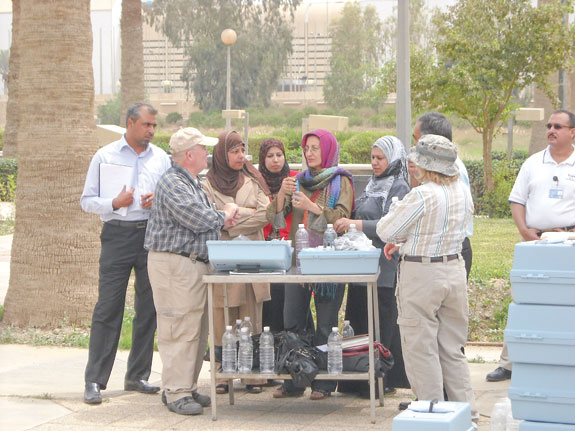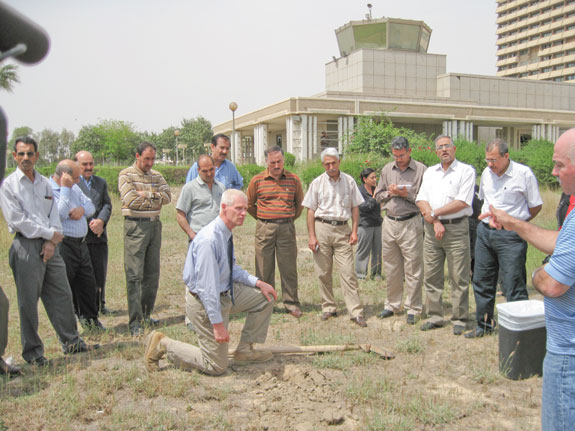In a war zone of diplomacy and development, successes can be far and few between. When we do have one, all the spent effort seems worthwhile, and the terms of success are sustainable. I often write in this column that one of our primary objectives should be coming home. That means we help those that want help, and then when they are ready to do the lifting on their own, we are done.

I do not believe we have the blood or treasure to be developing a nation for years with no end in sight. Yet I certainly write here that in some cases the efforts of development must be done holistically, and that means enough time to see them to completion. The completion metric includes defining the problems, designing an operational plan, implementing that plan, assessing and correcting the plan during implementation and then meeting the tactical and strategic metric for success.
If this sounds academic, so be it. Yet there is a pragmatic side to the developmental model, and this is why diplomats must have scientists, engineers and technicians on the team. In fact, the current model for reconstruction and development efforts in failed or failing states is the “Whole of Government” approach.
Political officers, lawyers, treasury economists, medical personnel, civil engineers, human resource managers and farming specialists all work together so that a systems approach can be designed and implemented. This is not easy work; if it were it would have already been done. Note a reference for further reading: The United States Army TRADOC 525-5-500 January 2008 Version One “Commander’s Appreciation and Campaign Design” describes what we call problem formulation: operational design and planning, and implementing (executing) the campaign.
Recently, I delivered soil fertility training to 32 adults. Most of them are government officials from the Iraqi Ministry of Agriculture (MoA). Several of them are my colleagues, and I have known them for my 15 months in country. They are part of the State Board of Agricultural Research. The senior member, Dr. Raad Omar Salih, a soil scientist, attended the two-day training.

During the second day of training, Salih spoke to me about the equipment. These are the portable suitcase-size kits resembling a chemistry set. The chemicals are largely extractants. A particular nutrient is desorbed from the dry soil, becoming a solute in the extractant solution, and then a change in color or a concentration is measured using a colorimeter or an electrode. The data are qualitative, but for our purposes, close enough for guiding farmers who hope to make better fertilizer purchase decisions.
Many of the class participants will take these soil fertility kits back to their offices, set up a small laboratory and begin evaluating local soils and irrigation water for nutrients, salts, pH and electrical conductivity. Generally, farmers here in Iraq do not have knowledge of these parameters, although most know that soil pH is about 7.7 to 8.1. Some salinity problem soils exist and fertilizers with nitrogen and phosphorus improve yields.
Yet for these two days of training, Salih suggested to me the Iraqi Ministry of Agriculture might be willing to take over the management of the soil fertility kits, the data handling and distribution and the additional training requirements. As the second day drew to an end, he gathered the class together and spoke to them about the MoA’s role for their work. My colleagues from the Provincial Reconstruction Team and I stood in the background and listened.
There were many questions. There was much discussion. Interestingly, there were 10 women at the course, and I was pleased with their level of engagement and participation. Salih spoke of having additional training the second half of May. He told the group he would make sure the chemical extractants and supplies would be delivered to them as the existing supply was used. He talked of building a database of soil fertility measurements so everyone might contribute qualitative data and then a soils map.
About mid-afternoon as we cleaned equipment and placed the test tubes, the funnels, the graduated cylinders and the chemicals in their appropriate spot, Salih and I huddled on the sidelines and talked about the very important question: “What comes next?”
Often in the work of diplomacy and development, if we can plant an idea and nurture that idea, then those we engage may change their mind. This mind-changing effect is the ultimate goal. Rarely do we succeed by telling anyone to do anything, but if we approach our work so that in the end, the idea is theirs, then we have a success.
So we plant ideas, and at some point downrange the spark of epiphany, of insight, of possibility, occurs in them. So it is that on this day of training, delivered outside under a warm Iraqi afternoon beneath a grove of beautiful date palm trees, that spark occurred.
My good friend and colleague Salih shook my hand and simply said: “Thank you, Dr. Gangwer. We will take it from here.”
I worked myself out of a job, and, in a deeply and meaningful way, I came one step closer to home. Clearly, the effect that we all want is changing minds and accepting responsibility. As Salih left for the day, with a constellation of his workers around him chatting about soil and chemistry, Iraq took just a small step closer to standing on its own.
This was one of the best days of my 16-month tour in Iraq. I will be home soon. PD
PHOTO 1: One group of participants led by a woman employee of the Ministry of Agriculture.
PHOTO 2: Soil fertility training participants watch a field exercise demonstrated by Mike Gangwer. Photos courtesy of Mike Gangwer.

-
Mike Gangwer
- Agricultural Scientist
- USDA-NRCS
- Email Mike Gangwer




